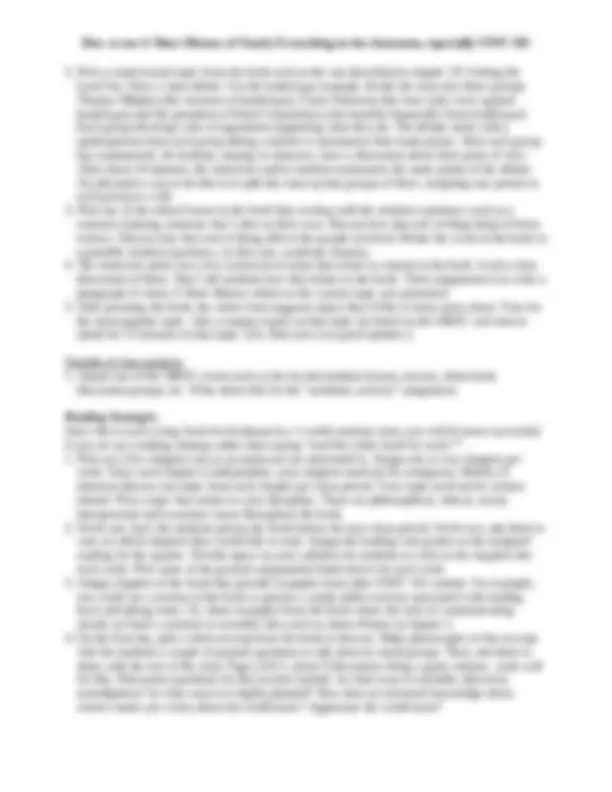
How to use A Short History of Nearly Everything in the classroom, especially UNIV 101
Individual projects
1. Each student chooses a science topic, scientist or chapter from A Short History.
a) Answer the discussion and Food for Thought questions from their chapter.
b) Do a brief library project related to their topic or scientist. For example, they can develop an
annotated bibliography, write a one-page summary, develop a PowerPoint presentation.
2. Use the UNIV 101 library assignment modified to integrate the OBOC book.
3. Interview a professor who teaches or does research in an area described in the book. Write about
this for the “faculty interview” assignment.
4. Assign each student a chapter. They develop a short, annotated list of websites relevant to the
chapter. Each student emails the list to the instructor. The instructor compiles a class list and
distributes it to the students in the class. Each student must visit each web site. They have up to
five vetoes (supported by a reason) to eliminate a site from the list. This helps students practice
critical analysis of web sites. Any site with more than a certain number of vetoes is dropped from
the class list. [For instructor extra credit: submit your class list to the OBOC website for the
campus to use.]
5. Each student selects a book from the bibliography of A Short History or this reading guide to do a
book report on. Since the bibliography is so long, no two students need to read the same book.
Instead of a full book report, you could develop a worksheet that students fill out about their book
This would help students learn how to summarize the main points of a book.
6. Find a current newspaper or magazine article dealing with an issue from A Short History. The
student submits the article, summarizes the relevant content in the article, summarizes the
relevant content in the book, and describes how the article is related to the book.
7. Use the Discussion feature of BlackBoard to post a question about each chapter. If you do this for
six weeks, assign 1/6th of the class to answer each question. You may evaluate this using a simple
scale: 5 point for doing it, 7 point for a reasonable answer, 9-10 points for a good answer.
Small Group projects
Small group projects are an effective way to get students in your UNIV 101 class to work together.
1. Each group chooses a chapter from A Short History.
a) The group answers the discussion and Food for Thought questions from their chapter.
b) The group answers the discussion and Food for Thought questions from their chapter and leads
a brief class discussion of the chapter.
2. Each group picks a “human interest story” from the book. They make a brief presentation to the
class about their story presenting the situation, how it was resolved in real life, how it could have
been resolved better, and what this story can teach a CWU student in 2006. One example is the
discovery, summarized in chapter 13: Bang!, of what caused the extinction of the dinosaurs.
3. Each group finds a current newspaper or magazine article dealing with an issue from A Short
History. The group presents the article to the rest of the class, summarizes the relevant content in
the article, summarizes the relevant content in the book, and describes how the article is related to
the book. Have the groups submit the articles in advance so you make sure each group presents a
different article.
4. Similar to number 7 above except in this case, each group is assigned a week to post a question.
Whole class projects
1. Assign one or two chapters per week.
a) Start each class with a OBOC “Question of the day” from that chapter. Students have two
minutes to write their answer to the question.










